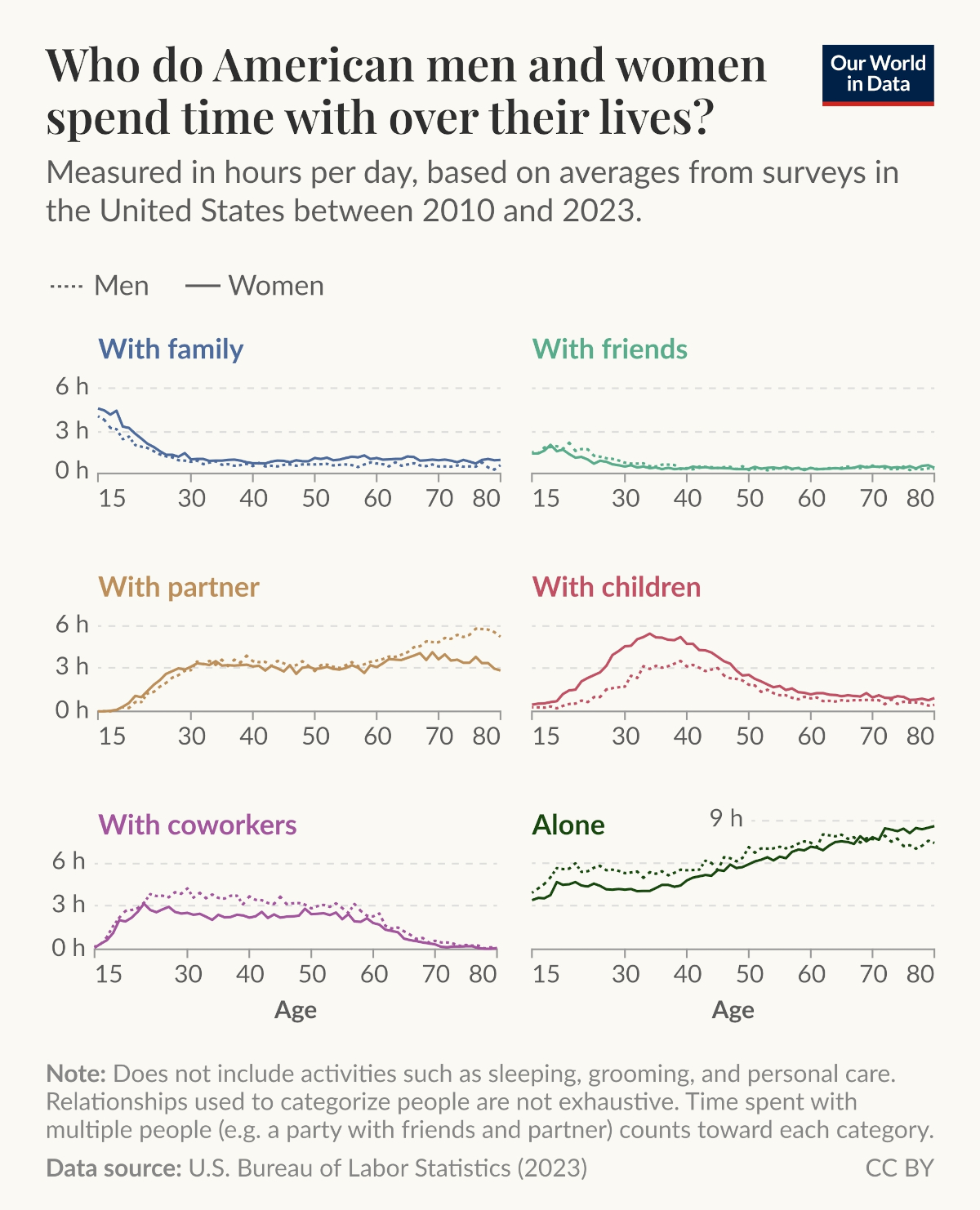![]() See this visualization first on the Voronoi app.
See this visualization first on the Voronoi app.
Charted: Who American Men and Women Spend Time With
This was originally posted on our Voronoi app. Download the app for free on iOS or Android and discover incredible data-driven charts from a variety of trusted sources.
Key Takeaways
- Men spend significantly more time with coworkers during their working years, while women spend more time with children at nearly every age.
- Time spent alone increases steadily with age, reaching over 8 hours daily in old age, particularly for women.
- Friendship time peaks in the late teens and drops off quickly after entering the workforce and starting families.
The way Americans allocate their time across relationships shifts dramatically over a lifetime.
This visualization from Our World in Data uses figures from the American Time Use Survey, which has tracked daily activities and social context across age groups from 2010 to 2023.
Here’s a look at how time is spent with others—or alone—by age and gender:
Teenage years are dominated by family and friends, but that balance shifts sharply after high school. Men spend more time with friends early on, while women log more time with family throughout life.
One of the most striking transitions is how coworkers, partners, and children become central during adulthood, then fade again in later years.
From Childhood to Career
In adolescence, time with family steadily declines, replaced in part by more time with friends—peaking at nearly 2 hours per day for both genders. But once people enter their twenties, time with friends drops off, and work enters the picture.
Men spend more hours with coworkers than women, especially during prime working ages (25–55). Conversely, women consistently spend more time with children across all ages, peaking at over 5 hours per day in their mid-30s.
Partners also take a growing share of social time from age 25 onward. Both men and women spend around 3–5 hours daily with their partners by retirement.
Later Life: Time Alone and With Partners
By the time Americans hit their sixties, social circles shrink. Coworker time drops sharply, and children are mostly out of the house. What replaces it? For many, it’s time alone.
Time spent alone increases with age, reaching 8–9 hours per day by age 80. While this doesn’t necessarily equate to loneliness—many people enjoy solitude—it does highlight the social transformation of aging.
Interestingly, partner time remains steady into older age, especially for men, many of whom spend more time with their partners in their 70s than at any other life stage.
Learn More on the Voronoi App 
If this kind of insight piqued your interest, you may also enjoy our interactive post on how much time you have left to live—a data-driven look at mortality, life expectancy, and how we prioritize our remaining time.
